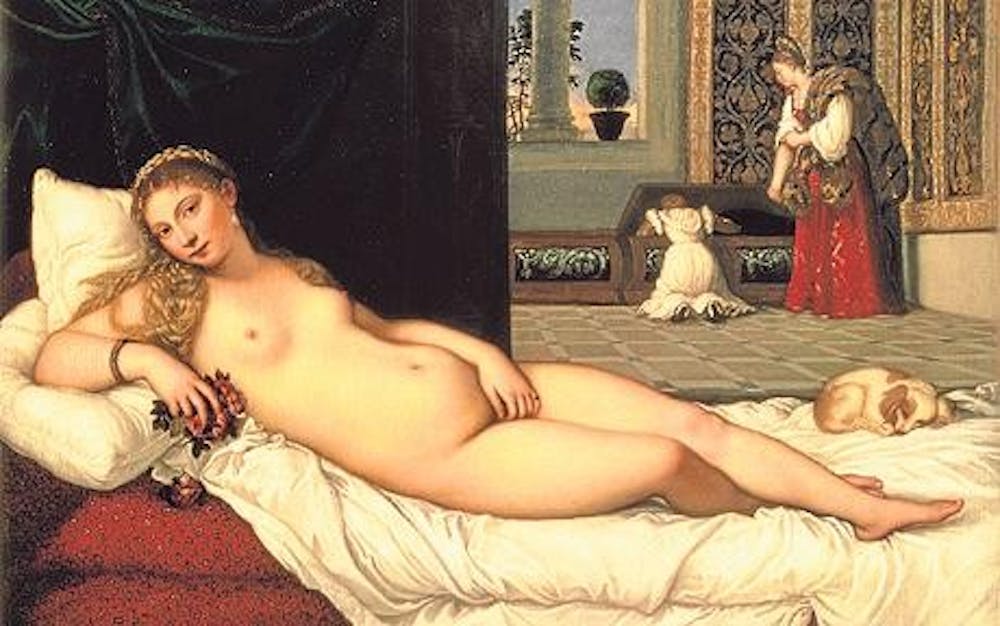1. Leonardo Da Vinci's Vitruvian Man
Produced during the early renaissance when the Italians were still figuring out perspective and proportions, the Vitruvian Man highlights the perfect symmetry of the body. Although the original was drawn in 1490, it remains an icon of the Renaissance, and is even featured on the back of the Italian euro. Let Leonardo be an inspiration to not drop your weight early and do equal sets of reps on both sides.
A Venetian–style work painted by Titian in 1538, this was one of the first Renaissance paintings to showcase female sexuality as commonplace. Titian depicts Venus—the ideal woman—with his signature soft blending of vibrant oil paints. Venus’s blasé posture emanates cool confidence that is enviable when lounging publicly.
3. Hashiguchi Goyo Woman After Bath
Of the thirteen prints Goyo carved in his lifetime, eight depicted demure, traditional, Japanese women in elegant poses like this one. Because of his refined technique and the few pieces he produced, Goyo’s colored woodblock prints were some of the most expensive and sought after in 20th century Japan. They are done in the ukiyo style (which translates to “floating world” in English). Try wrapping yourself in a towel to emulate this graceful look.
Unlike Michelangelo’s stoic and stationary masterpiece, Bernini’s David is a robust, vigorous athlete. Created more than a century after Michelangelo’s high renaissance version, this early 17th century mostly–nude marble sculpture is an icon of the peak of the baroque period in Italy. Bernini’s pivoting, energetic work of art invites us to admire David’s perfectly sculpted and muscular body from every angle.
This 11th century copper alloy sculpture depicts the Hindu god Shiva dancing and encircled by a flaming halo. Shiva holds in his hands a drum and a fire, which convey his powers as both a creator and potential destroyer of the universe. His flaming halo symbolizes the Hindu belief in the circular, endless nature of time. The purpose of his dance is to free men from the traps of illusion, allowing them to achieve salvation—a noble cause for sure.
At only eleven centimeters tall, this miniature statue was discovered in 1908 in an archaeological excursion near Willendorf, Austria. It is estimated to be from 24,000 BCE and many similar figurines have been discovered since. The sculpture's voluptuous proportions have led some historians to consider it one of the first self–portraits: it mimics the body of a woman as seen looking down from above. Beauty comes in all shapes and sizes, so keep this bod in mind as you look down at yours.







